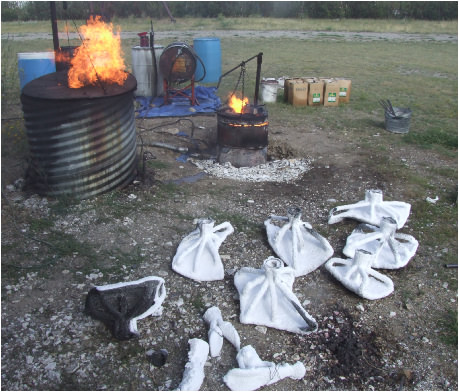
The wax is burned out of the ceramic shell in a kiln (the insulated culvert), leaving a hollow area for bronze to flow.
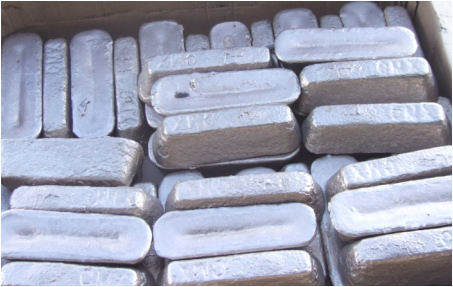
Bronze comes in the form of ingots, which contain
95% copper, 4% silicone, and 1% manganese weigh-
ing between 17 - 22 lbs.
95% copper, 4% silicone, and 1% manganese weigh-
ing between 17 - 22 lbs.
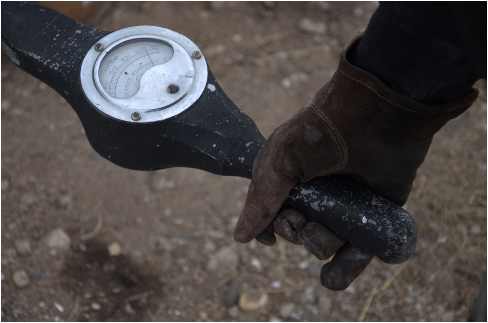
(Photo by Julia Lillegard)
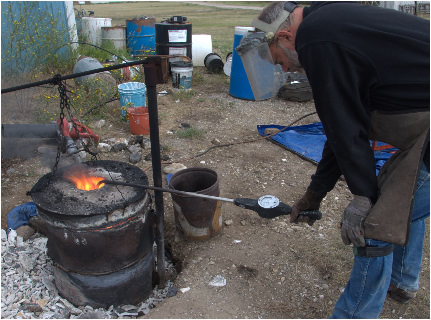
(Photo by Julia Lillegard)
A pyrometer is used to check the temperature of the bronze. When the bronze reaches the desired temperature (in this
case, 2100 degrees F), it is ready to be poured.
case, 2100 degrees F), it is ready to be poured.
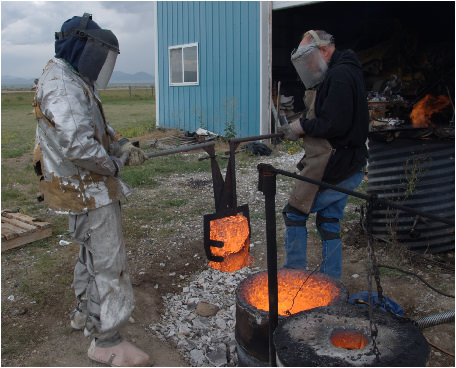
(Photo by Julia Lillegard)
Lillegard and his son, John, carefully lift the crucible out of the furnace.
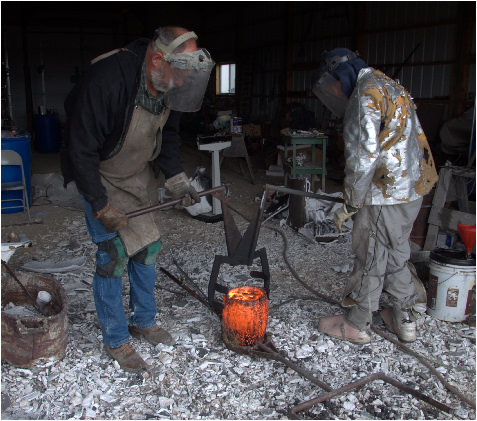
(Photo by Julia Lillegard)
The crucible is then placed in shanks that hold it while pouring.
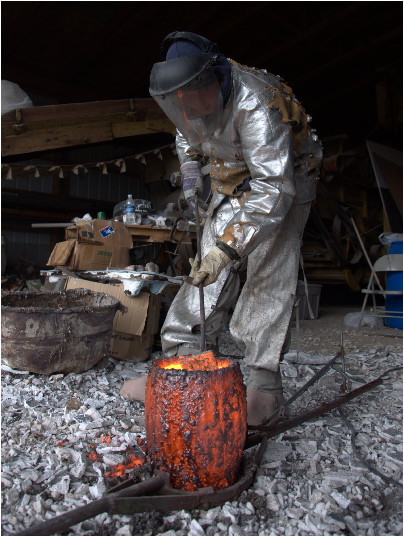
(Photo by Julia Lillegard)
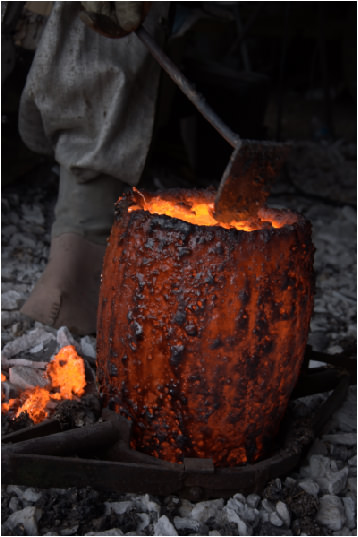
(Photo by Julia Lillegard)
John skims impurities from the surface of the molten bronze
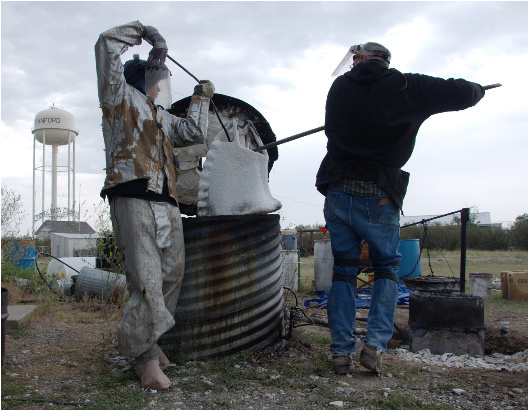
(Photo by Julia Lillegard)
John and Steve lift the mold from the kiln and place it near the crucible.
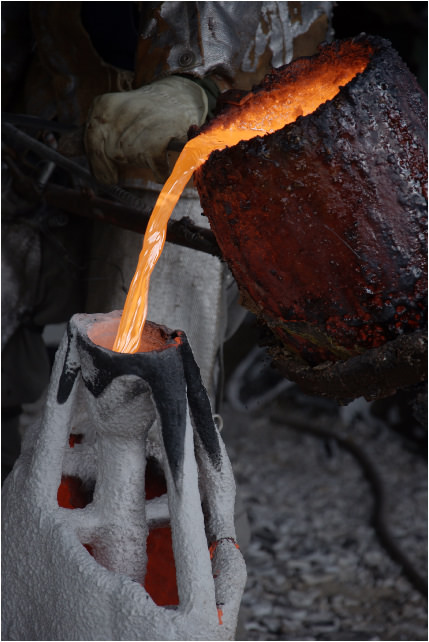
(Photo by Julia Lillegard)
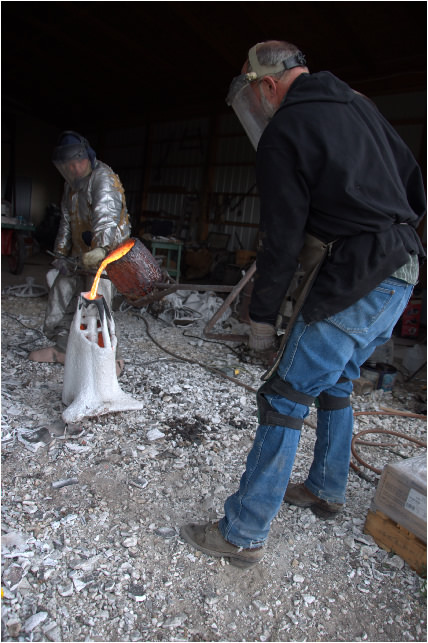
(Photo by Julia Lillegard)
The bronze is poured into the funnel.
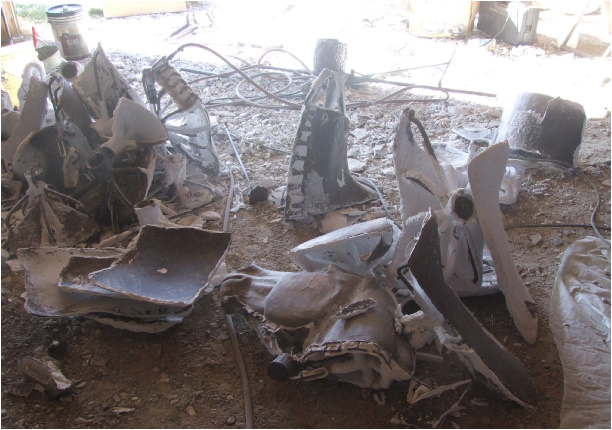
As the bronze cools, it shrinks and pieces of the ceramic shell begin to fall off. Lillegard
uses an air hammer or hand-held hammer and chisel to remove as much as possible.
Each section is then put in a bead blaster to remove any remaining ceramic.
uses an air hammer or hand-held hammer and chisel to remove as much as possible.
Each section is then put in a bead blaster to remove any remaining ceramic.